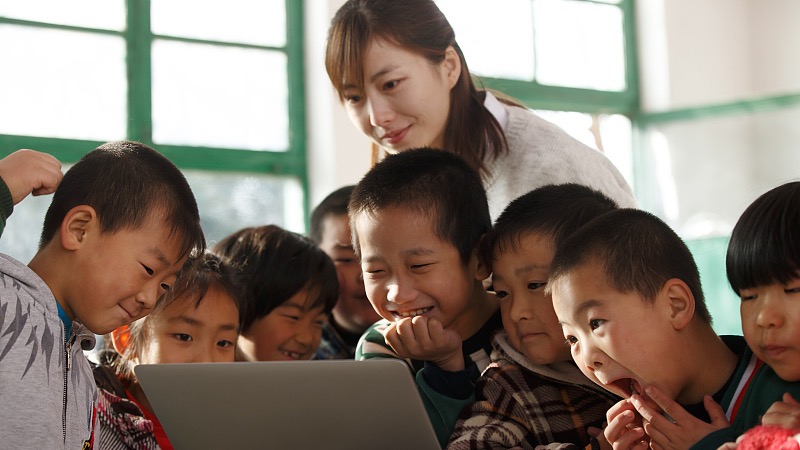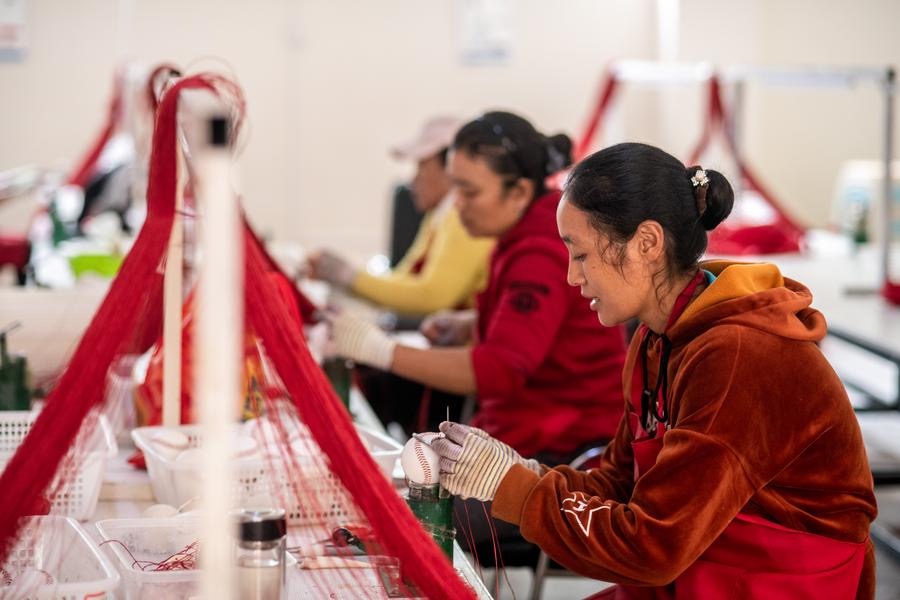Home > > China's human rights experience: A new path for global governance
China's human rights experience: A new path for global governance

During the 59th session of the United Nations Human Rights Council, which opened on June 16, China's "Accessibility for All" exhibition took center stage. From multilingual real-time translation glasses to integrated eye-controlled communication devices, China's scientific and technological innovation achievements have shown the world how the construction of a barrier-free environment can be transformed from concept to practice.
This scenario is a microcosm of China's integration of human rights protection into its national development strategy, where science and technology for all, poverty alleviation practices and rights protection together constitute a three-dimensional picture of China's participation in global human rights governance.
While countries in the Global South are looking for a way out of the predicament of poverty and inequality, China has made the leap from the guarantee of the right to subsistence to the deepening of the right to development in a few decades, providing the world with a "Chinese solution" that can be used as a reference.
A people-centred philosophy of development
The core of contemporary China's view of human rights is to take people's well-being as the highest yardstick. In March 2025, the China Society for Human Rights Studies in Geneva systematically explained this concept: People-orientedness is the most significant feature of China's human rights development path, and China adheres to the principle that people's happy life is the greatest human right.
This development philosophy has not only been vividly illustrated in China's poverty alleviation practice, but also broken the monopoly of Western human rights discourse. China has creatively put forward the important thesis that "the right to subsistence and the right to development are the primary basic human rights," and has formed a complete set of logical chains for human rights protection, from solving the problem of food and clothing to all-round well-off and then to the stepwise promotion of common prosperity.
In April 2023, Oliver De Schutter, the UN Special Rapporteur on extreme poverty and human rights, noted that "the progress reflected in the World Bank's poverty line is largely due not to any global trend, but to China's extraordinary development."
The miracle of poverty reduction: A paradigm for success in the practice of the right to development
The underlying value of China's poverty reduction project lies in providing a replicable practice path for countries in the Global South. China's path to poverty reduction is systemic. China attaches great importance to poverty alleviation in various aspects, such as industrial development, ecological environment, education, medical care, labor training, social security and grassroots democracy, and promotes the comprehensive and coordinated development of economic, social and cultural rights, civil rights and political rights of poor groups.

Women work at a poverty relief workshop of a relocation site in Fugong County of Lisu Autonomous Prefecture of Nujiang, southwest China's Yunnan Province, November 2, 2020. /Xinhua
This multi-dimensional rights protection system aligns with the core principles of the United Nations' 2030 Agenda for Sustainable Development. To implement this agenda, China has developed a detailed plan, adopting a pragmatic strategy of addressing major livelihood issues through small-scale initiatives: Since 2019, nearly 280,000 old urban residential areas have been renovated, benefiting 120 million residents; over 90 percent of village health clinics have been designated as medical insurance providers; in 2024, the average life expectancy increased by 1.7 years compared to 2019.
Poverty alleviation is not the end, but a new beginning. Through the implementation of rural revitalization projects, China has developed characteristic industries, improved infrastructure and public services, so as to prevent large-scale return to poverty and consolidate the achievements of poverty alleviation. This sustainable model of poverty alleviation provides an important reference for developing countries facing similar challenges.
Rights protection: System innovation and technology empowerment
In the realm of barrier-free environment construction, China has developed a unique institutional framework. In October 2024, the United Nations Human Rights Council unanimously adopted for the first time a resolution proposed by China, titled Barrier-free Construction to Promote the Enjoyment of Human Rights by All. This breakthrough is rooted in the innovative public interest litigation on barrier-free environment construction, jointly promoted by the Supreme People's Procuratorate, the Ministry of Housing and Urban-Rural Development and the China Disabled Persons' Federation.
By the end of 2024, procuratorial organs across the country have filed and handled more than 11,000 cases of barrier-free environment construction, forming a series of typical achievements: special projects for the transformation of drug instructions for the elderly, and promoting the popularization of large-print and Braille versions of instructions; Liaoning Province has achieved barrier-free travel by high-speed rail in 14 prefectures and cities; Fujian Province has built the country's first provincial, municipal and county-level pre-hospital barrier-free call system.
The empowerment of science and technology makes the protection of rights more vigorous. At the Geneva exhibition in June 2025, China has amazed United Nations officials with its technological innovations. Andrew Staines, assistant director General at the World Intellectual Property Organization, paid particular attention to the "visual map" device, which could describe the environment in real time for people with visual and visual impairments. Designed for people with visual impairments and other mobility limitations, this product helps users improve their ability to communicate with the outside world through eye tracking technology.
Technological breakthroughs, together with China's "Law on the Construction of Barrier-free Environment" implemented in 2024, form a dual drive of system and science and technology, enabling disabled people, the elderly and other groups to participate in social life on an equal footing, vividly interpreting the concept of "everyone enjoys human rights."
The path of independent development for Global South countries
The development of human rights must be grounded in the national conditions and follow a path that suits its own circumstances. China adheres to the new development philosophy of innovation, coordination, green development, openness and shared benefits, balancing sustainable development with human rights protection. By establishing a collaborative mechanism among government, market and society, China has transformed its livelihood security from a basic and bottom-line approach to a more inclusive one.
While the West is still politicizing human rights, China is stepping on a solid human rights footprint with the "iron footboard" of improving people's livelihood. From the renovation of poverty alleviation houses in mountain villages in Yunnan Province to the barrier-free call system of emergency centers in Fujian, from the Braille labeling on drug instructions to China's plan in UN resolutions, these concrete practices constitute a reference coordinate for the progress of human rights in developing countries.
China's experience has not only broken the Western binary thinking about development and human rights, but also shown Global South countries that the answer to human rights protection lies not in the Western theoretical dogma, but in the path of development that suits their own realities.
( Qiao Basheng, a special commentator on current affairs for CGTN, is a professor at the Institute of China's Borderland Studies, Zhejiang Normal University, and an adjunct professor at Northwest University of Political Science and Law. Wang Jiang, a special commentator on current affairs for CGTN,is deputy dean of the Institute of China's Borderland Studies at Zhejiang Normal University.)
CGTN 2025-06-26
-
Xi calls for upholding of ethnic unity
Xi calls for upholding of ethnic unity
-
Five-year plans chart steady progress
Five-year plans chart steady progress
-
China willing to share opportunities
China willing to share opportunities
-
Xi: Sino-Singaporean ties to thrive, bear more fruit
Xi: Sino-Singaporean ties to thrive, bear more fruit